Best Cordless Table Saw | 2024 Head-To-Head
Best Cordless Job Site Table Saw
When it comes to choosing the right table saw, professionals know that not all tools are created equal. With so many options on the market, it’s essential to understand how different models stack up in real-world scenarios. In this comprehensive Head-2-Head comparison, we put six of the top cordless table saws to the test, evaluating their performance on precision, power, ease of use, and safety. Whether you’re a seasoned contractor or a woodworking enthusiast, this guide will help you make an informed decision and find the saw that best meets your needs in the workshop. Let’s dive in and see which saw comes out on top!
Cordless Table Saw | Selection Criteria
We chose to test six saws in the 8-¼” range focusing on the mobile Pro contractor. In the end, we allowed Metabo HPT to send us their 10- inch and Festool to send their 168 mm [6.6”] saw because they did not have an 8-¼” saw.
Table Saw Specifications
Bosch
- Model: GTS18V-08
- Bare Tool Price: $399.00
- Blade Size: 8-¼
- Voltage: 18V
- Max RPM Speed: 5,500 RPMs
- Rip Capacity Left: 12”
- Rip Capacity Right: 25”
- Weight: 44 lbs
- Max Cut Height 90°: 2-½”
- Max Cut Height 45°: 1-¾”
DEWALT
- Model: DCS7485B
- Bare Tool Price: $449.00
- Blade Size: 8-¼
- Voltage: 60V
- Max RPM Speed: 5,800 RPMs
- Rip Capacity Left: 12”
- Rip Capacity Right: 24”
- Weight: 52.69 lbs
- Max Cut Height 90°: 2-½”
- Max Cut Height 45°: 1-¾”
Festool
- Model: CSC CYC 50 EB
- Bare Tool Price: $1,499.00
- Blade Size: 168 mm, 6.6”
- Voltage: (2) 18V
- Max RPM Speed: 6,800 RPMs
- Rip Capacity Left: 0”
- Rip Capacity Right: 11-¼”
- Weight: 33.08 lbs
- Max Cut Height 90°: 1-⅞”
- Max Cut Height 45°: 1-11/32”
FLEX
- Model: FX7211
- Bare Tool Price: $449.00
- Blade Size: 8-¼
- Voltage: 24V
- Max RPM Speed: 6,000 RPMs
- Rip Capacity Left:12”
- Rip Capacity Right: 25”
- Weight: 50.73 lbs
- Max Cut Height 90°: 2-⅝”
- Max Cut Height 45°: 1-⅞”
Metabo HPT
- Model: C3610DRJ
- Bare Tool Price: $599.00
- Blade Size: 10
- Voltage: 36V
- Max RPM Speed: 5,000 RPMs
- Rip Capacity Left: 22”
- Rip Capacity Right: 35”
- Weight: 67.3 lbs
- Max Cut Height 90°: 3-⅛”
- Max Cut Height 45°: 2-¼”
Milwaukee
- Model: 2736-20
- Bare Tool Price: $449.00
- Blade Size: 8-¼
- Voltage: 18V
- Max RPM Speed: 5800RPMs
- Rip Capacity Left: 12”
- Rip Capacity Right: 24-½”
- Weight: 41.6 lbs
- Max Cut Height 90°: 2-½”
- Max Cut Height 45°: 1-¾”
 Cordless Table Saw | Evaluation Format
Cordless Table Saw | Evaluation Format
Our team has put significant time and effort into our Head-to-Head evaluation to provide you with the most comprehensive information available. For this evaluation, we divided the analysis into several categories:
- Precision & Accuracy
- Performance
- Price
- Features, Usability & Ergonomics
- Saw Stand Evaluation
- We also chose the best value saw and also discuss decibels.
 How Most Table Saws Are Used In Job Sites
How Most Table Saws Are Used In Job Sites
When these saws arrive on-site, they are quickly unboxed, assembled, and put to immediate use. Users expect them to be mostly accurate. So we looked at the saws out of the box and then corrected any accuracy deficiencies prior to our power testing.
 Best Cordless Table Saw | What and How We Measured
Best Cordless Table Saw | What and How We Measured
To assess the manufactured accuracy of the eight saws, TBB evaluated six key areas:
- Table Flatness,
- Accuracy of 45° Stop,
- Accuracy of 90° Stop,
- Blade Parallel to Miter Slot,
- Fence Parallel to Miter Slot,
- Saw Blade Runout
Best Cordless Table Saw | Accuracy Testing Procedures
Table Flatness
We assessed the flatness of the table by placing the edge of a precision-ground flat bar across it and using feeler gauges to measure any gaps. Measurements were taken in four directions:
- Front-to-rear at the arbor
- Left-to-right at the arbor
- Upper left-to-lower right table corners
- Upper right-to-lower left table corners
This comprehensive data collection allowed us to create a ranked set of results by assigning a 1-2-3 rating to the relative values of the measurements. We then ranked the saws for overall table flatness as manufactured. For context, a typical sheet of copy paper is approximately 0.004 inches thick. Our measurements ranged from 0.004 to 0.026 inches.

The saws individual flatness scores across the 4 measurements are added to a summarized score. The saws are then ranked based on that score.
The Bosch ranked the highest in table flatness with a maximum measured deflection was .011″. The Flex was a close second followed by a three way tie for third with the DEWALT, Metabo HPT and Milwaukee. Surprisingly, Festool had the most deflection in its table with this measurement method. The Festool has a unique feature where the left side of the table can glide front and back to act as pseudo cross-cut sled. There is a small variable in the height between the sliding and the stationary sections of the table.

 Accuracy of 45° Stop
Accuracy of 45° Stop
To measure the accuracy of the factory-set 45-degree stop, We used a Beall digital inclinometer, which has an accuracy of 0.1 degrees. The process began by placing the Beall gauge on the table and calibrating it to zero relative to the table surface. After calibration, we attached the gauge to the blade and adjusted the blade incline until it hit the factory-set 45-degree stop. The measurement was recorded, and the test was repeated to ensure repeatability, with results consistently within 0.1 degrees of each other.

For contractors using their job site saws for high-quality built-ins or precise finished cuts, saw accuracy is crucial. The out-of-the-box accuracy from the manufacturer directly impacts the quality of the cuts and the safety of the operator. We compared the relative accuracy of the saws immediately after assembly to determine their “as-built” precision. The results showed how each saw stacked up in terms of manufactured tolerances and overall accuracy.
Accuracy of Vertical 90° Stop
We measured the accuracy of the factory-set 90-degree stop using the same digital inclinometer. After calibrating the gauge to the saw’s table, we moved the blade to approximately 70 degrees off vertical and then adjusted it to the factory-set 90-degree vertical stop. The measurement was recorded and repeated, with consistent results within 0.1 degrees of the previous tests. All of the saws were perfect at 90 degrees.

Blade Parallel to Miter Slot
To measure the blade’s alignment with the miter slot, we used an iGauging 35-125-4 digital dial indicator, accurate to 0.0005 inches. A new Diablo blade was installed in each saw, and the blade height was set to 2-inches.
We marked a single tooth as the reference point, positioned that tooth at the rear of the saw, and the dial indicator was set to zero against the marked tooth. The blade was then rotated to the front of the saw, and the same tooth was measured again.
A negative reading indicated the blade and miter slot were closer together at the front, while a positive reading indicated they were farther apart.
By analyzing the data from these tests, We were able to rank the saws based on their as-built accuracy and alignment.
Note – we placed a Diablo 8-1/4″ blade on the Metabo HPT for testing, but were not able to use a Diablo blade on the Festool, we used compatible tooth count Festool OEM blades.

Saw Fence Parallel to Miter Slot
The accuracy and safety of a saw depend on the blade being parallel to the rip fence. Having already tested the parallelism between the blade and the miter slot, the next step is to check if the miter slot is parallel to the rip fence. This ensures a parallel relationship between the blade and the rip fence.
 We used the iGauging 35-125-4 digital dial indicator to measure the accuracy of the factory-set fence relative to the table’s miter slot. We started by locking the fence in position approximately 1 inch away from the blade on the side opposite the miter slot. The throw of the dial indicator was adjusted to take readings in the middle of the indicator’s range of movement, ensuring consistency and accuracy in the measurements.
We used the iGauging 35-125-4 digital dial indicator to measure the accuracy of the factory-set fence relative to the table’s miter slot. We started by locking the fence in position approximately 1 inch away from the blade on the side opposite the miter slot. The throw of the dial indicator was adjusted to take readings in the middle of the indicator’s range of movement, ensuring consistency and accuracy in the measurements.
We calibrated the iGauging dial indicator to zero at the operator’s end of the rip fence. Then, we positioned the dial indicator at the rear of the saw, placed it on the rip fence, and took the reading. If the fence and the miter slot were closer together at the rear of the saw, the dial indicator showed a positive reading. Conversely, if they were farther apart, the dial indicator displayed a negative reading. A positive reading indicated that the materials being cut might be pinched, increasing the likelihood of kickback.

Saw Fence Parallel to Miter Slot | After Adjustment
It is important to note that all saws were adjusted after the accuracy evaluation and before the performance testing. With the exception of blade run-out, other adjustments can be made to fine-tune the saws. We were able to adjust the saws to the following:

Being able to reliably and repeatedly adjust the fence is an important feature of any table saw.
Blade Run-out
Blade run-out describes how much the edge of a saw blade wobbles while mounted on the motor shaft. Measuring run-out with a saw blade assumes the blade is nearly perfect in flatness. To ensure accurate measurements, TBB used a Freud calibration plate, which is ground to a flatness tolerance of ±0.0005 inches.
 We used the Freud calibration plate on each test saw to measure run-out. After removing the new Diablo blade and installing the calibration plate, we raised the trunnion to its maximum vertical adjustment. A black mark on the calibration plate provided a consistent starting position for the run-out test, using the iGauging dial indicator.
We used the Freud calibration plate on each test saw to measure run-out. After removing the new Diablo blade and installing the calibration plate, we raised the trunnion to its maximum vertical adjustment. A black mark on the calibration plate provided a consistent starting position for the run-out test, using the iGauging dial indicator.
We carefully rotated the calibration plate by its outer rim to avoid side-to-side force that could skew the results. We recorded the maximum reading on the dial indicator and validated it by repeating the test, ensuring consistent readings. Notably, the maximum readings occurred at different points along the plate’s rotation across the eight saws, reinforcing our confidence in the plate’s flatness.

Precision Summary – Winner FLEX
Based on the data from the 7 individual tests, we compiled a summary ranking to determine the overall winner for as-built accuracy. Here are the results: FLEX was consistently accurate and precise in 6 out of 7 categories. Milwaukee was a close second followed by DEWALT.

Best Cordless Job Site Table Saw | Performance Testing
For this segment of the testing, we used two different materials (3/4″ CDX Plywood, and 2x KD lumber while measuring the saw blade RPM drop. We assessed the saws performance based on their blade speed under load and speed of cut.
 Blade Speed (RPM under load vs no load)
Blade Speed (RPM under load vs no load)
The first performance measurement we looked at was blade speed while cutting all the test materials. This test provides a relative comparison of blade speed reduction under different loading conditions, giving us an idea of the motor/gearbox combination strength for each saw. We recorded the “no-load” speed to capture the relative drop in RPM during cutting. We used our measured no-load speeds instead of the manufacturers’ published values.

To measure blade speed, we used a digital laser, non-contact tachometer. Reflective tape was adhered to each saw blade just behind the carbide tooth, positioned above the wood cutting surface, allowing us to capture blade speed during the cuts.

A power feeder ensured consistent feed rates through each saw. We used a Diablo 8-¼” 24-tooth Framing blade in all the saws, including the Metabo HPT [10-inch saw] and for the Festool saw we used a 42 tooth finish [168 mm] Wood Universal Blade.
Performance Summary – Winner DEWALT
To determine our power winner we measured the percentage of RPM drop of the saw under a slow-feed cut and a fast-feed cut. By averaging the RPM drop across these two scenarios we determined our power ranking.



DEWALT had the most available power and showed the least RPM drop under load with just a 14% drop in RPM. By comparison the next closest was FLEX with a 19% drop and Milwaukee with 24%. The Festool was unable to complete either cut without overloading.
Manual Hand Feed Comparison
To validate our power feeder rig, we conducted a cutting speed test without it. One operator handled the test, feeding the material as quickly as possible while monitoring the saw’s motor and adjusting the feed rate accordingly. The operator adapted the speed for each cut, either speeding up or slowing down as needed. We made several cuts and recorded the fastest time achieved.
The hand feed result and the subsequent ranking matched the result seen in the power feed test. The gap between the FLEX and Milwaukee was closer in the 2nd and 3rd place race. The Festool was still unable to complete the test without overloading.
Best Cordless Table Saw | Price Comparison – Bosch
We ranked the table saws using their bare tool pricing. The Bosch was the least expensive at $399.00, with DEWALT, FLEX and Milwaukee tied at $499.00. Metabo HPT was $599.00 and the Festool was $1,499.00.

Ergonomics & Features
When evaluating cordless jobsite table saws, ergonomics play a crucial role in ensuring tools are both efficient and safe to use. Ergonomics focuses on designing tools that enhance productivity while reducing discomfort, fatigue, and the risk of injury.
Features such as well-placed handles, riving knives, safety switches, and non-slip coatings contribute to the overall ergonomic performance of a saw.
Evaluation Factors
In our ergonomic evaluation of cordless table saws, we considered the following factors and rated them on a scale of 1 to 6 (1 being best):
Weight
Below is a summary based on the provided weights for the different brands. These figures show the relative heaviness of each model with its battery, with Metabo HPT being the heaviest at 62.4 lbs, and Bosch being the lightest at 45.7 lbs.

Power Switch
Ease of use and safety are major considerations for our team, especially with the large, easy-to-actuate power switches.
Bosch and FLEX had the best switch, both are pulled into the on position, or shut off with the users knee. The team found them to be simple and intuitive.
The Festool has a two-step process to turn the saw on, requiring activating a master power switch, followed by the power on switch. The saw cannot be stopped easily with a knee.
The DEWALT has a red paddle, however, when held at its highest point and released, the paddle can accidentally shut off the saw due to the closing momentum. This occurs occasionally.
On Board Storage
The Festool was superior with its Systainer based accessory storage. The Milwaukee came in second with excellent accessory storage secured with a permanent mounted, spring-loaded securing nut. All the other saws had removable wing-nuts that can be easily lost.
Fence
The Flex fence is a rack and pinion style similar to DEWALT and Milwaukee. The only real difference is that the FLEX fence has a rechargeable, 12 LED light strip built into the fence. This light is activated by a rocker switch on the rear side of the fence. The DEWALT and Milwaukee fence are super smooth to operate, and capable of precise 1/64” adjustments.

The Bosch saw also has a rack-and-pinion system, but we experienced jerky micro adjustments. Additionally, the fence lock is on the left side of the knob, which can be awkward, especially for DEWALT and Milwaukee users.
Festool has a lever-lock fence that indexes and slides in a dado. We found that it was not as smooth as other saws and took effort to dial in. The fence requires unlocking with a knob, sliding out, reversing, and sliding in for narrow rips. The fence can be removed and stored in a Systainer.

Metabo HPT has a pull-to-lock mechanism, which is opposite of Bosch, DEWALT, and Milwaukee saw. The team found it choppy when trying to dial in 1/64”. The fence features a twist knob to lock on or remove, requiring users to push tabs to engage which is less intuitive than other models. The fence also rotates for extended support or narrow rips, requiring a sub-fence assembly that stores on the side of the saw.

 Raising Blade
Raising Blade
The Festool blade can be adjusted to a precise height using an electronic control linked to a 1/64-inch digital display. In comparison, raising the blade on the Flex saw is quick, requiring just 9¾ hand rotations.

Hand Rotation Results are as follows:
- FLEX: 9-¾ rotations
- Bosch: 13-¾ rotations
- DEWALT: 35-¾ rotations
- Metabo HPT: 29-¾ rotations.
- Milwaukee: 15 rotations.
Ripping Width
Most of the 8-¼” saws had similar ripping widths.
The Metabo HPT is a 10-inch saw and as a result has the largest ripping capacity at 35-¼” to the right and 22-⅜” to the left.

 Bevel Adjustments
Bevel Adjustments
The Festool had the widest bevel range from -10 to 47 degrees.

 Riving Knife Adjustments
Riving Knife Adjustments
The riving knives were either removable or non removable. The Milwaukee riving knife was the easiest to adjust or remove. It requires a uses a easy to actuate, pull lever to release the riving knife.
The FLEX uses a flip down lever to release the riving knife. The user needs to tilt the riving knife out and down to seat it, which is not intuitive. Overall we liked the feature, once you get the hang of it.

The DEWALT has an easy to turn knob to loosen and a simple depress on the knob removes the riving knife. The Bosch has a lever that turns to adjust, locks in at multiple positions, but is non-removable. The Festool requires too many steps to access, but super easy to remove once accessible. Locks in at one height and is removable.

The Metabo HPT has a nicely machined aluminum cam lever, but was stiff to actuate. It has three height positions and is non-removable.
Guard
We evaluated the saw blade guards and found that the Metabo HPT was super easy to install. The Bosch was clunky and awkward to attach. The DEWALT features a 1-⅝” OD (1-⅜” ID) dust shroud on the blade guard. Milwaukee was similar to DeWalt but without a dust shroud. The Festool required many steps but was super easy.
 Battery Gauge
Battery Gauge
The FLEX has the brightest battery LED gauge, with 4 LEDS. This feature can be activated with the saw in the off position. Bosch has a bright green, 3-LED light above the power switch but does not activate unless the saw is powered on. Festool has two battery symbols on the top left corner of the LCD screen, which can be hard to see in daylight. The rest of the saws require pushing the battery indicator, all facing in the user’s direction.
Best Cordless Table Saw | Feature Winner – FLEX
FLEX’s cordless table saw has set a new standard in its category, emerging as the feature winner with an impressive performance. Scoring a low 31 points across 14 categories, FLEX excelled by taking top honors in six distinct areas, outshining many competitors.

While Milwaukee scored 37 points and Bosch came in with 44 points, FLEX’s unique features make it a strong contender. The saw is equipped with a folding side extension table, which enhances stability and support for larger workpieces—an invaluable asset for both professional woodworkers and DIY enthusiasts.
Additionally, the FLEX table saw includes innovative rechargeable LED lights integrated into the rip fence, providing excellent visibility for precise cuts. This thoughtful design element not only improves visibility and enhances safety by illuminating the work area.

Best Tablesaw Stand -Winner Milwaukee
Our crew found that saws with scissor stands were the fastest and easiest to set up. Brands like DEWALT, Bosch, Milwaukee, and Flex all offer models with scissor stands. Bosch, Flex, and Milwaukee have latches that lock the saw to the stand, making them highly mobile; you can easily pick up and relocate the saw since they lock together.

Photo: Bosch Saw
In contrast, the DEWALT stand does not have a locking mechanism, which often results in the saw sliding off when users try to move it. The Milwaukee stand features an adjustable foot for leveling, while the Bosch stand has rear legs that extend further than the others, providing added stability but also creating a potential trip hazard.

The Festool setup includes the MFT table and dolly, which takes up more space than the scissor stands. Although the Festool saw sits in grooves marked on the tabletop to assist with placement, it does not lock in place, making it awkward to move once set up. This system is more suited for rolling from the truck to the job site and can stack with other Systainers to save space inside a vehicle.


The Metabo HTP stand is excellent but requires bolting to the saw, creating a semi-permanent pairing. It features sturdy folding tubular legs, an adjustable leg, and roller wheels. While the crew appreciated this setup, they found it too large to be considered a truly mobile table saw, as it’s not easy to lift into a vehicle.
Decibels
All of the saws were quite loud, with decibel levels ranging from 104 to 106 dB. We concluded that a difference of just 2 dB was not sufficient to effectively differentiate or score the saws.
Best Portable Job Site Table Saw – Winner FLEX
Choosing the best portable job site table saw was a challenge, as our testing focused on the everyday mobile contractor.
FLEX, being new to the market, had ample time to perfect their saw. With a total score of 8 points, the FLEX portable jobsite table saw ranks first overall in our assessment, showcasing its balance of accuracy, usability, and value. While it may not lead in every individual category, its combination of strengths makes it an excellent choice for contractors seeking a dependable and cost-effective tool, particularly for those prioritizing performance without a high price tag.

The Milwaukee portable job site table saw ranks second overall with a score of 10 points. Its strong performance in accuracy, power, and ergonomics makes it an appealing option for contractors who value precision and reliability. The stability provided by its stand further enhances its appeal, ensuring safe operation in various job site conditions. In summary, the Milwaukee table saw represents a solid investment for professionals looking for a high-performing, durable tool that delivers consistent results. While it comes at a slightly higher price, its overall value in terms of performance and usability makes it worthwhile for serious contractors.

The DEWALT portable jobsite table saw ranked third overall with a score of 14 points. Its strengths in power and competitive pricing make it a reliable choice for contractors seeking a powerful saw. Although it may not excel in every category, it provides a well-rounded performance that meets many professionals’ needs. In summary, the DEWALT table saw offers a good balance of power, accuracy, and affordability, making it an attractive option for contractors who prioritize performance and value. Its reputation for reliability further enhances its appeal, ensuring it remains a popular choice in the job site tool market.
The new Festool table saw did not quite fit our testing criteria and, due to its high price, is likely to attract a specific user base. While it is expensive, it offers several key advantages: designed for precise cuts, it is ideal for job sites or workshops with limited space and seamlessly integrates with other Festool products, enhancing workflow for brand users. We feel that the Festool is best suited for professional woodworkers, carpenters, finish carpenters, and those who value precision and portability.


Best Value Winner – FLEX
“Best value” is a crucial category in tool comparisons as it balances decision-making by considering both performance and budget, leading to practical choices that provide long-term savings and higher overall satisfaction by ensuring durability and reliability.

Best Cordless Table Saw | Final Thoughts
These tests and evaluations are demanding, time-consuming, and limited in scope since we are not a professional testing company and have restricted time for evaluations. We are unable to conduct long-term testing to assess durability, nor can we test every possible application for which you might use these saws. Nevertheless, we believe that all the table saws in this Head-to-Head are quality tools, and our testing highlights the pros and cons of each model.

Ultimately, everyone must choose a tool based on their specific needs, uses, and budget. With all the data provided above, we are confident that you can make a more informed decision when purchasing your next portable jobsite table saw.

Best Cordless Tables Saw Comparison Video
Buy Now From Our Sponsored Retailers
About the author
4 Comments
Leave a comment
Disclosure
Product reviews on this site contain our opinion of a product or service. We will always strive for objectivity and transparency in our reviews. Our goal is to provide readers with honest, objective information based on our own experiences. We never have and never will accept payment in exchange for a positive review. Many of the products that we review are provided to us for free by a manufacturer or retailer. In some cases, we also have advertising or affiliate relationships with manufacturers and retailers of products and services we review. For additional information please visit our additional disclosure policies.




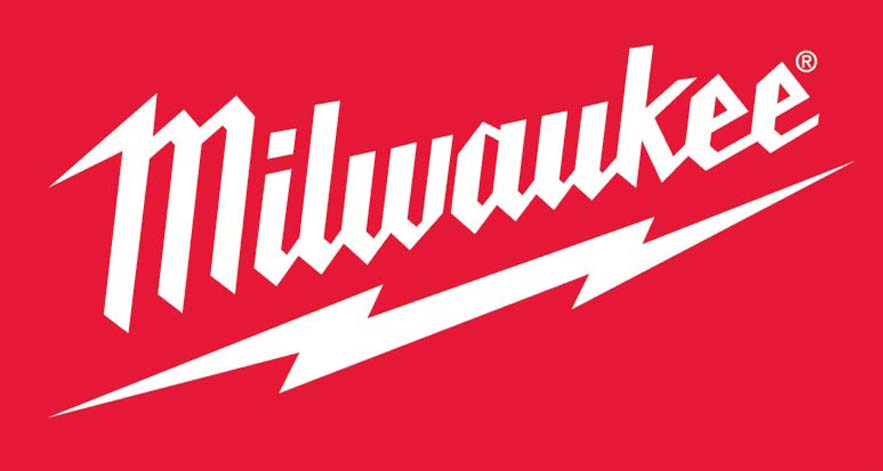

























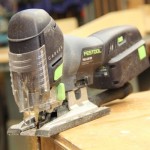
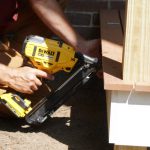
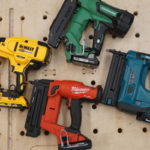
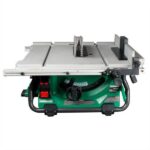












I had a Dewalt Cordless table saw for four years. I used it primarily for ripping 2×4 and 3/4″. It many ways it was superb. The things that made me crazy were as follows. 1) Dewalt batteries only have three bars to show battery capacity. To often with one bar I lost power in a cut. And you had to look at the battery to see the charge. 2) The damn power button is a pain as you pointed out. 3) While the fence adjustment is a pleasure, so many times I would release the locking lever, make the adjustment and then forget to lock the fence. 4) Try and set the blade to 22.5 degrees or similar. What a pain fiddling with the adjustment. The Festool did not really fit this line up. Like having a Sprinter in a pick up truck review. Great review though.
Ron – Great input. While the Festool isn’t really the same as these….it is a cordless option that users can consider so it’s important to put it on the table. The beauty of these H2H’s is we share all the data…so folks can sift through and make their own decisions based on our data.
I don’t recall ever seeing a Flex tool of any kind on a jobsite.
Starting to see them more and more. They make some decent stuff.